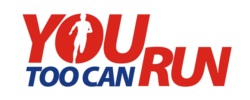Sweat Rate Study
Posted On 29 Jan 2014
Conclusions
The results of our study suggest that sweat rate may be lower in non-elite marathon runners compared to elite runners. The mean sweat rate at the end of 1 hour was 1.4 l/hr which was body mass loss of approximately 1.9% (for mean body weight of 71.6 kgs before start of the run). Using this background of baseline sweat rate data further studies on electrolyte imbalance and fluid replacement strategy for these non-elite runners should be performed.
References
- Burfoot A. The history of the marathon: 1976-present.Sports Med. 2007;37(4-5):284-7.
- Grandjean AC, Grandjean NR.Dehydration and cognitive performance.J Am Coll Nutr. 2007 Oct;26(5 Suppl):549S-554S.
- American College of Sports Medicine, Armstrong LE, Casa DJ, Millard-Stafford M, Moran DS, Pyne SW, Roberts WO. American College of Sports Medicine position stand. Exertional heat illness during training and competition.Med Sci Sports Exerc. 2007 Mar;39(3):556-72.
- Martin DE. Strategies for optimising marathon performance in the heat.Sports Med. 2007;37(4-5):324-7.
- Kenefick RW, Cheuvront SN. Hydration for recreational sport and physical activity.Nutr Rev. 2012 Nov;70 Suppl 2:S137-42.
- Cheuvront SN, Montain SJ, Sawka MN. Fluid replacement and performance during the marathon.Sports Med. 2007;37(4-5):353-7.
- Noakes T, IMMDA. Fluid replacement during marathon running. Clin J Sport Med 2003;13:309-18
- O’Neal EK, Wingo JE, Richardson MT, Leeper JD, Neggers YH, Bishop PA. Half-marathon and full-marathon runners’ hydration practices and perceptions.J Athl Train. 2011 Nov-Dec;46(6):581-91.
- Godek SF, Bartolozzi AR, Godek JJ. Sweat rate and fluid turnover in American football players compared with runners in a hot and humid environment.Br J Sports Med. 2005 Apr;39(4):205-11
- Henkin SD, Sehl PL, Meyer F. Sweat rate and electrolyte concentration in swimmers, runners, and nonathletes.Int J Sports Physiol Perform. 2010 Sep;5(3):359-66.
- Armstrong LE. Assessing hydration status: the elusive gold standard. J Am Coll Nutr 2007;26 (5 Suppl): 575S-584S
- Beis LY, Wright-Whyte M, Fudge B, Noakes T, Pitsiladis YP. Drinking behaviors of elite
male runners during marathon competition.Clin J Sport Med. 2012 May;22(3):254-61. - Baillot M, Le Bris S, Hue O. Fluid Replacement Strategy during a 27-Km Trail Run in Hot and Humid Conditions.Int J Sports Med. 2013 Jul 18. [Electronic publication ahead of print]
- Millard-Stafford M, Sparling PB, Rosskopf LB, Snow TK, DiCarlo LJ, Hinson BT. Fluid intake in male and female runners during a 40-km field run in the heat. J Sports Sci 1995;13:257-63.
- Chorley J, Cianca J, Divine J. Risk factors for exercise-associated hyponatremia in non-elite marathon runners. Clin J Sports Med 2007;17:471-77.
- Armstrong LE, Maresh CM. Effects of training, environment and host factors on the sweating response to exercise. Int J Sports Med 1998;19 (Suppl 2): S103-05.
- Voltaire B, Galy O, Coste O, Recinais S, Callis A, Blonc S, Hertogh C, Hue O. Effect of fourteen days of acclimatization on athletic performance in tropical climate. Can J Appl Physiol 2002;27:551-62.
- Havenith G, Fogarty A, Bartlett R, Smith CJ, Ventenat V. Male and female upper body sweat distribution during running measured with technical absorbents. Eur J Appl Physiol 2008;104: 245-55.
- Maughan RJ. Distance running in hot environments: a thermal challenge to the elite runner. Scand J Med Sci Sports 2010;20 (Suppl 3): 95-102.
- American College of Sports Medicine, Sawka MN, Burke LM, Eichner ER, Maughan RJ, Montain SJ, Stachenfeld NS. American College of Sports Medicine position stand. Exercise and fluid replacement. Med Sci Sports Exerc 2007;39:377-90.

Leave a Reply